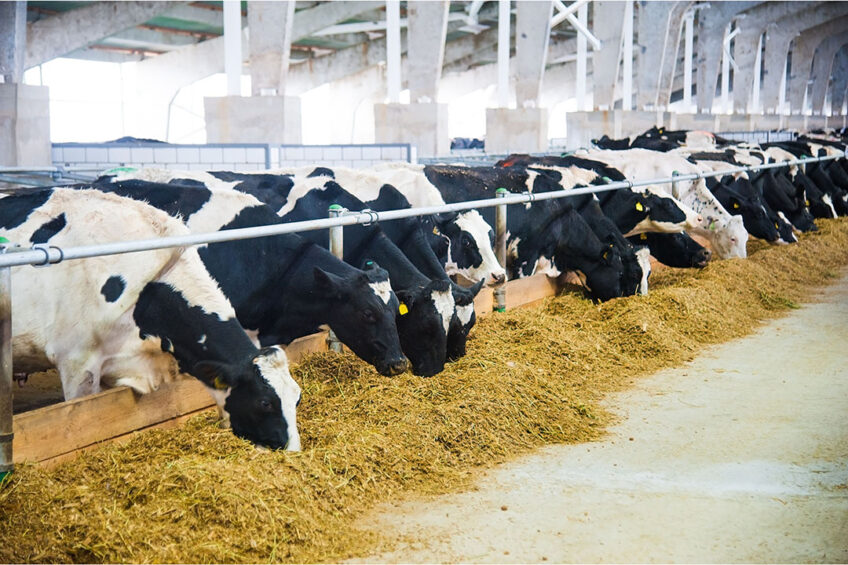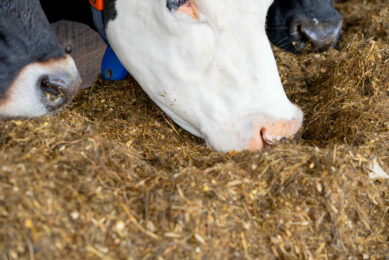Fat in dairy diets: New in research

Fat continues to be an important consideration in the nutrition of dairy cows with recognition of its role as a key macronutrient, and requirements to meet animal needs for optimal milk production long-established.
However, as with amino acids being the key element of protein nutrition, fatty acids are the key element within ‘fat’ nutrition and the industry continues to be informed by published research data as to the specific effects of individual fatty acids when supplemented in dairy cow diets and how to implement these findings at farm level.
In this regard, a further tranche of research data on many aspects of fatty acid nutrition were presented at the recent American Dairy Science Association annual conference held this year in Ottawa, Canada. There continues to be a primary interest in furthering knowledge and understanding on the use and effects of palmitic acid (C16:0) and oleic acid (C18:1) and blends of these when included in dairy diets, as well as a continuing focus on potential mechanisms to improve dietary fat digestibility.
Other areas receiving attention included recognition of the role and potential benefits of omega-3 fatty acids, as well as use of fatty acid supplements to alter functionality of dairy products. A summary of some key papers from the conference is presented below.
Palmitic acid research
Supplements with elevated C16:0 are amongst the most common used in the industry and research over recent years has increased our understanding of how this fatty acid influences production and metabolism, in particular via stimulation of milk fat production and through alteration of nutrient partitioning, data which have led to more specific recommendations for use in diets through lactation.
· The effects of a high-palmitic acid supplement included at 2% of diet dry matter (DM), and a milk fat-depressing diet, were evaluated in Prof Harvatine’s lab at Penn State University. Neither diet treatment altered milk yield compared to cows offered the Control diet; however, milk fat increased by 0.3% with the addition of C16:0 compared to a reduction of 1.35% when cows were offered the milk fat-depressing diet.
· The effect of season on response to high-C16 supplements (included at 1.45% of diet DM) was evaluated in a meta-analyses study from Prof Lock’s lab at Michigan State University and Dairy Australia. Overall, supplementing with C16:0 increased milk yield by 1.18 kg/d, milk fat by 0.08 kg/d and milk fat concentration by 0.10%. However, a significant seasonal response was recorded with milk yield increasing by 3.02 kg/d and fat-corrected milk by 3.63 kg/d during the summer period, compared to the Control (unsupplemented) diet. This data provides clear evidence of beneficial production responses through supplementation of C16:0, but highlights the specific benefits to milk and milk fat production when used through warmer weather periods.
· Increasing C16:0 supplementation has been linked to increased ceramide production in previous studies which can alter insulin resistance in adipose tissue and influence nutrient partitioning in dairy cows. A further study from Penn State University reported that the inclusion of C16:0 in a dairy diet at 1.95% of DM significantly increased plasma ceramide concentration, as well as increasing milk fat by 0.5%, while the inclusion of stearic acid (C18:0) had no significant effects on these parameters. This data supports the concept that differences in nutrient partitioning, milk fat yield and body weight gain reported with C16:0 supplementation may be affected through changes in ceramide signaling.
· Short-term effects of palmitic and stearic supplementation with supplement feed rate increased every 4 days through 0 to 150, 300, 500 and 750 g/d were the subject of a further study at Penn State University. Neither C16:0 nor C18:0 increased milk yield, but increasing C16:0 progressively increased milk fat yield and concentration, being 0.37% higher than the Control group at the 500 g/d supplement level. Neither fatty acid treatment appeared to reach a plateau in response even at the highest level of supplementation, indicating the potential of cows to continue responding to increasing doses of C16:0 addition above those evaluated.
· Increasing concentration of C16:0 in supplements from 35 to 50, 65 and 80%, with constant oleic acid and varying stearic acid, was evaluated in a study by the University of Illinois, Urbana, with supplements added at 2% of diet DM. Highest milk yield was recorded with the 65% C16:0 supplement, and fat-corrected milk increased linearly with increasing C16:0 concentration. Milk fat concentration was highest at the 65% C16:0 concentration (4.34% vs 3.95% in the Control group).
· Supplementing dairy cows with fat supplements containing between 59 and 73% palmitic acid increased milk yield of multiparous cows from 41.1 to 43.3 kg/d and milk fat yield from 1.44 to 1.52 kg/d regardless of parity, compared to low fat Control diets in other data reported by Penn State University.
Oleic acid
In contrast to the effects of C16:0, recent research data provides evidence of oleic acid promoting insulin sensitivity in adipose tissue and reducing lipolysis.
· Further evidence of the lipogenetic effects of oleic acid were presented by Michigan State University in a study with adipocytes cultured with palmitic and/or oleic acids, concluding that the enhanced lipid accumulation and adipogenesis noted with particular fatty acid cultures provide rationale for use of oleic acid in the peri-parturient period to enhance lipid accumulation.
Palmitic/oleic blends
Recent years have seen increasing interest and research activity in supplementation with variable blends of palmitic and oleic fatty acids and this theme continued in the current conference outputs.
· Michigan State University evaluated the response of cows offered a 70% C16:0 – 20% C18:1 calcium salt supplement, assessed at either 22 or 28% diet starch concentration, from days 1 to 24 of lactation. The study reported higher milk yield in response to increased starch concentration and higher milk fat concentration in response to fat supplementation, the latter increasing by 0.26% and 0.23% on the low and high starch diets, respectively.
· The effects of a 60% C16:0 – 30% C18:1 calcium salt formulation offered to peak production dairy cows were reported by Michigan State University in a comparison of parity through warm weather conditions. Supplementation of diets with 1.8% fatty acids per kg DM increased milk yield by 2.1 kg/d, and increased milk fat yield, in multiparous but not primiparous cows. A similar formulation was evaluated in a study by Hiroshima University, reporting a response in milk yield of up to 5.1 kg/d for early lactation cows supplemented with 300 g/d of the fat supplement.
· Increasing concentration of C16:0 in calcium salt supplements was the topic for Israeli work comparing production output of cows offered a more-traditional calcium salt formulation (45% C16:0 – 35% C18:1) to that of cows offered 60:30 and 70:20 palmitic – oleic ratio blends. This study reported highest milk yield in the more-traditional supplement and higher milk fats with the higher-C16:0 supplements (3.55, 3.94 and 3.87%, respectively).
Lecithin/lysophospholipids
The potential to increase fatty acid digestibility using natural emulsifiers was also a theme at the conference.
· A study at the Ohio State University evaluated the effect of lysophospholipids added to diets containing high-palmitic or high-stearic fatty acid supplements, reporting improvements in total diet fatty acid digestibility in diets where a high-stearic acid supplement was used. The study also provided additional support for the beneficial effect of palmitic acid on NDF digestibility (+2.6%).
· A study at Cornell University using abomasal infusions of soya or sunflower-lecithin sources reported no significant effects on diet fat digestibility, though cows on the sunflower lecithin treatments produced more milk.
Omega-3 fatty acids
The interest in effects of essential omega-3 fatty acids continues in the industry.
· Work from the University of Guelph reported a small beneficial effect on inflammatory response when dairy cows were exposed to a lipopolysaccharide challenge when offered a calcium salt of fish oil supplement postpartum.
· Dr Moallem from the Volcani Institute, Israel, summarised a series of studies highlighting selective uptake of omega-3 fatty acids in ovarian compartments and in sperm, exerting some positive influence on fertility. Data presented also concluded that beneficial effects could be achieved from α-linolenic acid (C18:3), typical of linseed and grazed pasture, and not solely from long chain omega-3 from fish oil origins.
Cottonseed
· The Michigan State group presented data on studies evaluating increasing inclusion of whole cottonseed in the diet from 0 to 8, 16 and 24% of diet DM. Increases in yields of milk (up to 2.0 kg/d) and milk fat (up to 0.11 kg/d) were reported up to 16% cottonseed inclusion, but DM intake and milk production were reduced at the 24% inclusion rate.
This extensive output of research papers on fatty acid nutrition adds to our developing knowledge of the effects and roles of differing fatty acid formulations in dairy nutrition and importantly, helps guide our thinking and advice offered to producers at farm level.
Join 13,000+ subscribers
Subscribe to our newsletter to stay updated about all the need-to-know content in the dairy sector, two times a week.










